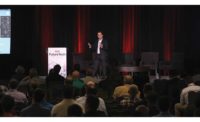...search-and-rescue efforts, preventing spread of diseases and providing food and shelter, in my opinion, takes precedence over reconnaissance efforts.”
Naeim says the situation on the ground needs to be stabilized first before a reconnaissance team can do its job. “I believe that although reconnaissance teams from the U.S. are and will be assembled, it will take considerable time before they will be dispatched,” he says.
Degenkolb Engineers is assembling its own team. There are no specific plans yet but Chris D. Poland, chairman and CEO of the San Francisco-based firm, says he expects to deploy a team in a few days.
According to the U.S. Geological Survey, National Earthquake Information Center, the quake was at a depth of 6.2 miles with an epicenter 10 miles southwest of Port-au-Prince.
There is little information available about Haiti’s building or seismic codes, but the little that is known is ominous.
Patrick Paultre, who holds the Canada Research Chair in Earthquake Engineering in the Department of Civil Engineering at the University at Sherbrooke in Canada, says that when he left Haiti in 1974, after completing his undergraduate degree in architecture, there were no building codes at all in the country, let alone seismic codes. “Engineers received their education from a good engineering school and were using technical books from France at that time, and French codes,” he says.
Paultre is not up-to-date on current practice in Haiti, but doubts the nation has a national code. “Although Haiti had earthquakes in the past, this was not a preoccupation, even though two important faults are crossing the country,” says Paultre.
Eduardo Miranda, a professor of engineering at Stanford University, says he was in the neighboring Dominican Republic in late November to give a short course and a conference on earthquake engineering. He says that although Hispaniola sits on a plate boundary, it has not moved much in recent years and as a result there is not much EQ awareness in the population, nor among engineers. Yet, to his surprise the event drew more than 600 participants.
“In the Dominican Republic many buildings have lots of problems—soft stories, short columns, no stirrups in beam-column joints, lack of confinement, poor anchorage, etc.,” he says. “There is little code enforcement. Neighboring Haiti is much poorer and I suspect the situation there is even worse.”
Miranda says he expects investigators will find that most buildings there will not have a typical western US construction, “yet I think it would still be of interest to the non-ductile frame concrete coalition. I suspect there will be plenty of shear failures to see and document in columns and joints. I would suspect some problems that you may observe there in buildings could share some similarities with pre-70’s buildings in California and other parts of the U.S.”
According to the USGS, the earthquake occurred in the boundary region separating the Caribbean plate and the North America plate. The plate boundary is dominated by left-lateral strike slip motion and compression and accommodates about 20 millimeter per year slip, with the Caribbean plate moving eastward with respect to the North America plate, says USGS. At the longitude of the Jan. 12 quake, motion between the Caribbean and North American plates is partitioned between two major east-west trending, strike-slip fault systems—the Septentrional fault system in northern Haiti and the Enriquillo-Plaintain Garden fault system in southern Haiti.
USGS says the Enriquillo-Plaintain Garden fault system has not produced a major earthquake in recent decades, although it is the likely source of historical large earthquakes in 1860, 1770, 1761, 1751, 1684, 1673, and 1618, although none of these has been confirmed in the field as associated with this fault.
Various architecture-related organizations are mobilizing to give assistance. The UK-based charity Article 25, which was founded by former Royal Institute of British Architects president and Archial Group director Maxwell Hutchinson following the 2004 Indian Ocean tsunami, has called on architects to help. Says spokeswoman Stephanie Johnston, “As the recovery process moves forward into more long-term development, the invaluable skills of the built environment play a crucial role in delivering safe, sound, innovative design solutions to alleviate the extreme distress caused by losing one’s home and livelihood.”
Article 25 Architecture for Humanity co-founder Kate Stohr says AFH it had planned to send a design fellow to Yele, Haiti, to start a new project. “I know Yele, Haiti lost people. So very sad,” she wrote in an e-mail. The organization now is communicating with other groups to determine a course of action. AFH has posted information on its Web site at http://www.architectureforhumanity.org including links to stories and photos.
Co-founder Kate Stohr says “What I’d like to see happen is a housing recovery center similar to what we did in Biloxi to allow NGO’s to share design and construction expertise...[but] First, we do need donations...”
Habitat for Humanity is “addressing shelter solutions for low-income families” affected by the earthquake. “We are closely monitoring the situation and have been in contact with Habitat for Humanity Haiti. We will begin Habitat’s recovery efforts as soon as possible,” said Torre Nelson, area vice president of Habitat’s Latin America Caribbean office. The organization has been working in Haiti for 26 years.
Also, John McAslan + Partners, Allied London, and the Royal Institute of British Architects—in collaboration with Y�le Haiti, the nonprofit founded by musician Wyclef Jean—recently launched a student competition to design a music studio in Haiti. Right now, Wyclef’s group is collecting money for earthquake victims.


